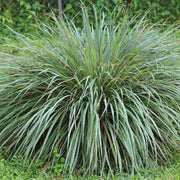As you begin learning about essential oils, it can be helpful to develop an understanding of the main chemical families that essential oils fall under.
Chemical families don’t always share the same therapeutic or safety properties, but they can be used as helpful generalizations when learning about essential oils.
In addition to a general understanding of chemical families, we also recommend reading about each oil you purchase on our website to get a more in-depth report on its exact chemical makeup (included in our GC/MS reports) as well as its uses, benefits, and safety considerations.
Aldehydes
Therapeutic properties
- Effective antifungal properties— blend with a soothing oil such as Sandalwood or Lavender
- Anti-inflammatory
- Antispasmodic
- Antibacterial
- Serves as a tonic/sedative to the nervous system
- Cooling
Safety considerations
Oils with a significant aldehyde content can irritate the skin. If oxidized the damage can increase considerably.
Citral, (Geranial and Neral) a main component in these oils, is irritating to the skin surface and the mucous membranes.
Using low concentrations of aldehydes in blends is generally safe for the skin. Use 5-6 drops of high-aldehyde oils per ounce of a carrier and combine them with oils high in monoterpenols.
Aldehydes are very susceptible to oxidation, so store them in airtight bottles in cool, dark places.
People with estrogen-related cancers should avoid internal use and high-dose, long-term topical use of oils high in citral. They may consider using high-citral oils in 1% dilutions for short time periods without concern.
Common oils with high aldehyde content
- Citronella Java Essential Oil (Cymbopogon winterianus)
- Lemongrass Essential Oil (Cymbopogon flexuosus)
- Melissa Essential Oil (Melissa officinalis)
Esters
Therapeutic properties
- Antispasmodic— ranging from a gentle antispasmodic action to a powerful one, depending on the oil. Many aromatherapists consider the component, isobutyl angelate (found in Roman Chamomile), as one of the best antispasmodics available.
- Can have pronounced sedative effects.
- Balancing and soothing— esters are known as the “balancing components”. Many esters have significant regulating and rebalancing effects on the sympathetic nervous system. Oils high in esters are often emotionally uplifting.
- Some are analgesics, such as Inula, Jasmine, Lavender, Roman Chamomile, and Ylang Ylang.
- Some are useful digestive aids, such as Cardamom, Roman Chamomile, and Bergamot.
- Generally anti-inflammatory and effective in soothing skin rashes and skin irritations.
- Adaptogenic— helps the body adjust to and deal with stress.
Safety considerations
With proper dilutions for applying to the skin, there are generally no safety concerns.
The only exception is the component, methyl salicylate, which can cause skin and eye irritation, among other things. (Methyl salicylate is present in Wintergreen.)
Common essential oils with high ester content
- Bergamot Essential Oil (Citrus bergamia)
- Cardamom Essential Oil (Elettaria cardamomum)
- Clary Sage Essential Oil (Salvia sclarea)
- Jasmine Absolute Essential Oil (Kasminum sambac)
- Lavender Essential Oil (Lavandula angustifolia)
- Roman Chamomile Essential Oil (Chamaemelum nobile)
- Rose and Geranium Essential Oil (Rosa x damascena/Pelargonium x asperum)
- Wintergreen Essential Oil (Gaultheria fragrantissima)
Ethers
Therapeutic properties
- Antispasmodic
- Can help maintain healthy intestinal flora, especially when there is gas pain
- Promotes healthy digestion
Safety considerations
Take care with skin application as these oils can irritate the skin.
Essential oils with a high content of ethers can raise toxicity concerns when used in larger doses. Use these oils in low doses (less than 1% in a blend) and only for acute, short-term use.
Avoid using oils with ethers during pregnancy.
Oils high in ethers should never be used long-term. (Examples of oils high in ethers are Anise and Sweet Fennel.)
Common essential oils with high ether content
- Anise Essential Oil (Pimpinella anisum)
- Sweet Fennel Essential Oil (Foeniculum vulgare)
Ketones
Therapeutic properties
- Essential oils that contain a significant percentage of ketones are valuable for respiratory infections, as they tend to have highly effective mucolytic and expectorant properties.
- Oils with high ketone levels can have analgesic tendencies.
- Menthone (found in Peppermint) has carminative effects.
- Some oils high in ketones may help with scar and wound healing, such as Spike Lavender and Vetiver.
- Peppermint, Rosemary ct camphor, and Spike Lavender can have circulatory effects.
Safety considerations
Ketones vary. They do not share the same safety concerns or therapeutic behaviors, so you have to consider each component individually.
The following are non-toxic ketone compounds: menthone, verbenone, vetivone, fenchone, carvone, piperitone, jasmone, and turmerone.
Aromatics International does not sell the oils that have ketones with serious toxicity concerns. However, camphor content (such as in Rosemary and Spike Lavender) can cause concerns for some.
Avoid using oils with camphor for those who are epileptic, pregnant, or have a high fever. Do not place preparations with camphor into or near the noses of infants and young children. If ingested by infants or children, camphor can prove fatal. Camphor can cause convulsions either from oral ingestion or, more rarely, inhalation. Camphor can also cause miscarriage, but only in almost fatal doses. (Lethal dose is only four teaspoons!) Only use oils that contain camphor for short periods of time and in small amounts.
A general rule is to use only 1% of ketones in a 1-ounce blend. Additionally, ketones are resistant to being metabolized by the liver and can tend to accumulate, so there is some concern when using ketones in high daily doses over long periods of time. Those with liver diseases should only use minimal amounts of oils high in ketones. Although camphor is a central nervous system (CNS) stimulant, overdoses can cause CNS depression.
Common essential oils with high ketone content
- Peppermint Essential Oil (Mentha x piperita)
- Rosemary ct Camphor Essential Oil (Rosmarinus officinalis ct camphor)
- Spike Lavender Essential Oil (Lavandula latifolia)
- Turmeric Essential Oil (Curcuma longa)
- Vetiver Essential Oil (Vetiveria zizanoides)
Monoterpenes
Therapeutic properties
- Mild antiseptic properties.
- Useful decongestant properties for the respiratory and the muscular system.
- The rubefacient effect provides circulation and pain relief for muscle pain and stiffness.
- Some monoterpene oils are anti-inflammatory.
- Mild antibacterial effect— some may even be antiviral.
- Highly lipophilic— penetrates the tissues of the body easily (penetration enhancers).
- Effective airborne deodorizers and purifiers.
- Improves general health.
Safety considerations
Oils high in monoterpenes can cause skin irritation or sensitization if they have oxidized. It is essential to store them tightly closed in a cool, dark place.
Monoterpenes are not water-soluble; avoid in the bathtub unless they are well diluted in a carrier oil. Studies have shown that the monoterpene, limonene, is a potential irritant and allergen when oxidized.
Common essential oils with high monoterpene content
- Balsam Fir Essential Oil (Abies balsamea)
- Bergamot Essential Oil (Citrus bergamia)
- Black Pepper Essential Oil (Piper nigrum)
- Black Spruce Essential Oil (Picea mariana)
- Cypress Essential Oil (Cupressus sempervirens)
- Juniper Berry Essential Oil (Juniperus communis)
- Scotch Pine Essential Oil (Pinus sylvestris)
- Siberian Fir Essential Oil (Abies sibirica)
- Tea Tree Essential Oil (Melaleuca alternifolia)
- White Pine Essential Oil (Pinus strobus)
- White Spruce Essential Oil (Picea glauca)
Monoterpenols
Therapeutic properties
- Essential oils containing a significant percentage of alcohols are often powerful anti-infectious agents because they have antibacterial, antifungal, and sometimes antiviral activity.
- Non-toxic and mild on the skin and mucous membranes.
- They are great for long-term support for the immune system.
- Research has shown that linalool (linalol) is effective against bacteria and geraniol is effective against fungi. The research also suggests that terpinen-4-ol in Tea Tree oil activates white blood cells that deal with infections.
- The specific components of menthol, linalool (linalol), alpha-terpineol, and geraniol make the site of an application feel cold and provide local anesthetic effect. Linalool (linalol) offers a significant sedating quality, making oils such as Lavender or Rosewood ideal for use in your insomnia blends.
- Oils high in Monoterpenols are useful in skincare as they provide antiseptic and sometimes anti-inflammatory properties and are generally safe and healing for the skin.
- Can act as a tonic for the nervous system.
- Supports emotional balance.
- Can nourish and strengthen the immune system by detoxifying.
- Blends that contain Geranium, Lavender or Bergamot have a natural deodorizing effect as these oils help to inhibit bacteria.
- Monoterpenol high oils have antispasmodic qualities for soothing muscles, especially the specific components of geraniol, linalool (linalol), menthol, citronellol, and borneol.
Safety considerations
Most monoterpenol-rich oils are generally safe on the skin and are not known to irritate. One exception is peppermint, which can potentially be a skin irritant.
Do not use menthol-rich oils on children under five years of age. It is also harmful if inhaled by infants.
Anyone advised to avoid antimalarials, sulfonamides, chloramphenicol, streptomycin, or aspirin should avoid menthol-rich oils.
Geraniol (found in Palmarosa, Geranium, Citronella, Rose, Fingerroot, and Thyme ct. geraniol) may cause mild skin sensitization. Do not exceed a dermal maximum of 5.3%.
Robert Tisserand states that many studies show that linalool (linalol) is incapable of eliciting any allergic reactions in a healthy person. It has an extremely low risk and demonstrates broad-spectrum anticancer activity in cell lines.
Common essential oils with high monoterpenol content
- Clary Sage Essential Oil (Salvia sclarea)
- Fingerroot Essential Oil (Boesenbergia pandurata)
- Fragonia Essential Oil (Agonis fragrans)
- Geranium and Rose Essential Oil (Rosa x damascena/Pelargonium x asperum)
- Lavender Essential Oil (Lavandula angustifolia)
- Neroli Essential Oil (Citrus aurantium var. amara)
- Palmarosa Essential Oil (Cymbopogon martinii var. motia)
- Peppermint Essential Oil (Mentha x piperita)
- Petitgrain Essential Oil (Citrus aurantium var. amara or bigaradia)
- Rose Absolute Essential Oil (Rosa x damascena)
- Spike Lavender Essential Oil (Lavandula latifolia)
- Sweet Marjoram Essential Oil (Origanum majorana)
- Tea Tree Essential Oil (Melaleuca alternifolia)
Oxides
Therapeutic properties
- Oils high in oxides are potentially very powerful aids in any respiratory illness.
- Essential oils containing significant amounts of 1,8-cineole (except German Chamomile) have antiviral, antifungal, and antibacterial effects.
- 1,8-cineole is a stimulant for the glands of the respiratory system. It is an expectorant and a mucolytic, stimulating mucus-secreting cells and activating the cilia of the respiratory mucous membranes.
- 1,8-cineole has a stimulating effect on the mental process, increasing blood flow to the brain when inhaled.
- Research has shown 1,8-cineole has an anti-inflammatory effect on bronchial asthma, decreasing coughing, shortness of breath, and can ease expectoration.
- 1,8-cineole is a skin penetration enhancer. It also has a drying effect.
- 1,8-cineole is an analgesic and anti-inflammatory agent for muscular and respiratory systems.
- The oxides in German Chamomile offer muscular decongestion and anti-inflammatory effects.
Safety considerations
Take care when using 1,8-cineole with asthmatics, as it is possible to set off an attack. An asthmatic attack is an individual response to the oil, dosage, application, and specific situation.
Do not use with infants. Take care when using with children under the age of 10. If oxidized, it can cause skin irritation and sensitization.
Common essential oils with high oxide content
- Cardamom Essential Oil (Elettaria cardamomum)
- Eucalyptus Globulus Essential Oil (Eucalyptus globulus)
- Fragonia Essential Oil (Agonis fragrans)
- Ravintsara Essential Oil (Cinnamomum camphora 1,8 cineole)
- Rosalina Essential Oil (Melaleuca ericifolia)
- Spike Lavender Essential Oil (Lavandula latifolia)
Phenols
Therapeutic properties
- Essential oils containing a significant percentage of phenols are highly anti-infectious agents that are for use in acute situations. (Use oils high in monoterpenols for long-term infections.)
- Rubefacient— increases local blood circulation, causes minor skin irritation, vasodilation, and local analgesic effect.
- Can have anti-inflammatory effects when used with other skin-healing oils in a blend.
- Used in acute illnesses and infections to stimulate the immune system.
Safety considerations
Oils high in Phenols are the most irritating oils to the skin and mucous membranes and can cause dermatitis and sensitization.
If phenols are present in high concentrations in an essential oil, use that essential oil in very low dilutions on the skin and for short periods of time.
They are generally not safe for the skin in a bath.
Use in small amounts when blending oils for diffusing. (No more than 1% of the blend!)
Do not use oils high in phenols with babies and children.
Do not use Clove oil with people who have clotting disorders, as it is high in the phenolic component eugenol, which is an anticoagulant.
Common essential oils with high phenol content
- Cinnamon Leaf Essential Oil (Cinnamomum zeylanicum)
- Clove Bud Essential Oil (Eugenia caryophyllata)
- Oregano Essential Oil (Origanum vulgare)
- Tulsi (Holy Basil) Essential Oil (Ocimum sanctum ct eugenol)
Sesquiterpenes
Therapeutic properties
- With sesquiterpenes, you should consider the therapeutic effects of each oil individually, as one cannot generalize these components as easily as with most other chemical families.
- Oils high in sesquiterpenes can have anti-inflammatory, antibacterial, antiseptic, analgesic, and antispasmodic properties.
- Even a small amount of sesquiterpenes in a carrier oil can have a pronounced therapeutic effect.
Safety considerations
Oils high in sesquiterpenes do not generally have safety concerns, although, Black Pepper may cause irritation for those with sensitive skin, and some additional sesquiterpenols may become skin irritating if oxidized.
According to Tisserand, b-elemene found in Myrrh has shown antiangiogenic action, meaning it suppresses new blood vessels from forming. This may help with preventing tumor growth. However, it may also suppress fetal growth and best avoided during pregnancy.
Common essential oils with high sesquiterpene content
- Balsam Copaiba Oleoresin (Copaifera officinalis)
- Black Pepper Essential Oil (Piper nigrum)
- Cedarwood Essential Oil (Juniperus virginiana)
- Ginger Essential Oil (Zingiber officinale)
- Manuka Essential Oil (Leptospermum scoparium ct east cape)
- Melissa Essential Oil (Melissa officinalis)
- Myrrh Essential Oil (Commiphora myrrha)
- Patchouli Essential Oil (Pogostemon cablin)
- Rhododendron Essential Oil (Rhododendron anthopogon)
- Vetiver Essential Oil (Vetiveria zizanoides)
- Ylang Ylang (Complete) Essential Oil (Cananga odorata var genuina)
Sesquiterpenols
Therapeutic properties
- The therapeutic properties of sesquiterpenols can vary greatly, as the individual components have unique effects.
- Many oils high in sesquiterpenols have grounding, antispasmodic, antibacterial, skin healing, and anti-inflammatory effects.
- Some of the oils offer long-term support for the terrain (entire body and all that goes into keeping it healthy), can act as tonics for the veins and lymph system and are immune stimulants.
Safety considerations
Sesquiterpenols are generally safe oils and are not known to irritate skin.
If you use anticoagulant drugs, have peptic ulcers, or have any bleeding disorders, avoid oils that contain b-eudesmol, such as Blue Cypress.
Additionally, some sesquiterpenols can have an antiangiogenic effect, which means it suppresses new blood vessels from forming. Do not use during pregnancy.
Common essential oils with high sesquiterpenol content
- Carrot Seed Essential Oil (Daucus carota)
- Cedarwood Essential Oil (Juniperus virginiana)
- German Chamomile Essential Oil (Matricaria recutita)
- Ginger Essential Oil (Zingiber officinale)
- Patchouli (pogostemon cablin)
- Sandalwood Essential Oil (Santalum album)
- Vetiver Essential Oil (Vetiveria zizanoides)












